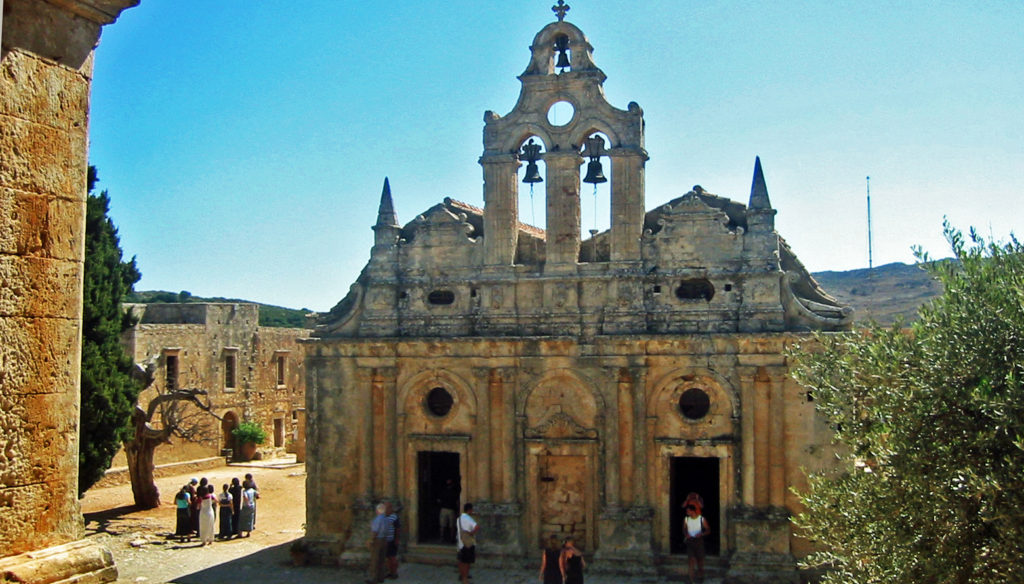
The Arkadi Monastery lies about 14 miles southeast of Rethymno, Crete, the largest and most populous of the Greek Islands. In much the way the Alamo Mission became the symbol of an independent Texas, the Arkadi Monastery became the symbol of an independent Crete.
In 1587, the Venetians, who had controlled Crete since 1212, restored the deteriorating Arkadi Monastery and built a two-nave Renaissance church on its grounds. After the Ottoman Empire conquered Crete in 1669, much of the population converted to Islam. However, the majority Christian population chafed under Muslim rule. In May 1866, about 1500 Christians formed a revolutionary war counsel and appointed Gabriel Marinakis, the Abbot of the Arkadi Monastery, among its leaders. When Marinakis refused calls to abandon the rebellion, the ruling Sultan sent a reported 15,000 men and 30 cannons to carry out his threat to destroy the monastery, then storing munitions. On November 6, 1866, the Sultan’s forces surrounded the monastery, with 964 people then inside, the majority of them women and children. Although the greatly outnumbered men inside the walled monastery inflicted heavy casualties on the attackers, they broke through the western gate on November 9. As Marinakis had ordered them to do, the women and children ran to the gunpowder storeroom, where they blew themselves up to avoid being captured. A bullet killed Marinakis on the last day of fighting. The attackers cut off his head and paraded it around Crete.
The heroism at the Arkadi Monastery became an international rallying cry for an independent Crete, which became independent in 1898 and part of Greece in 1913. Today, the Arkadi Monastery is among the most visited sites on Crete. A museum on the grounds includes information and artifacts from the “Arkadi Holocaust.” The skulls of more than 60 victims of the suicidal explosion are displayed on shelves.
Comments are closed.